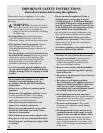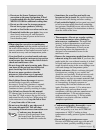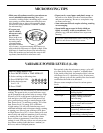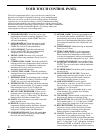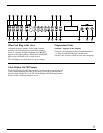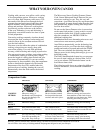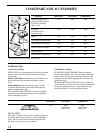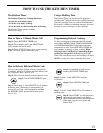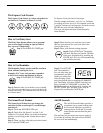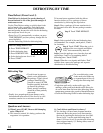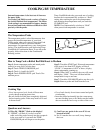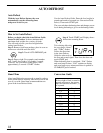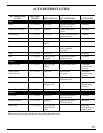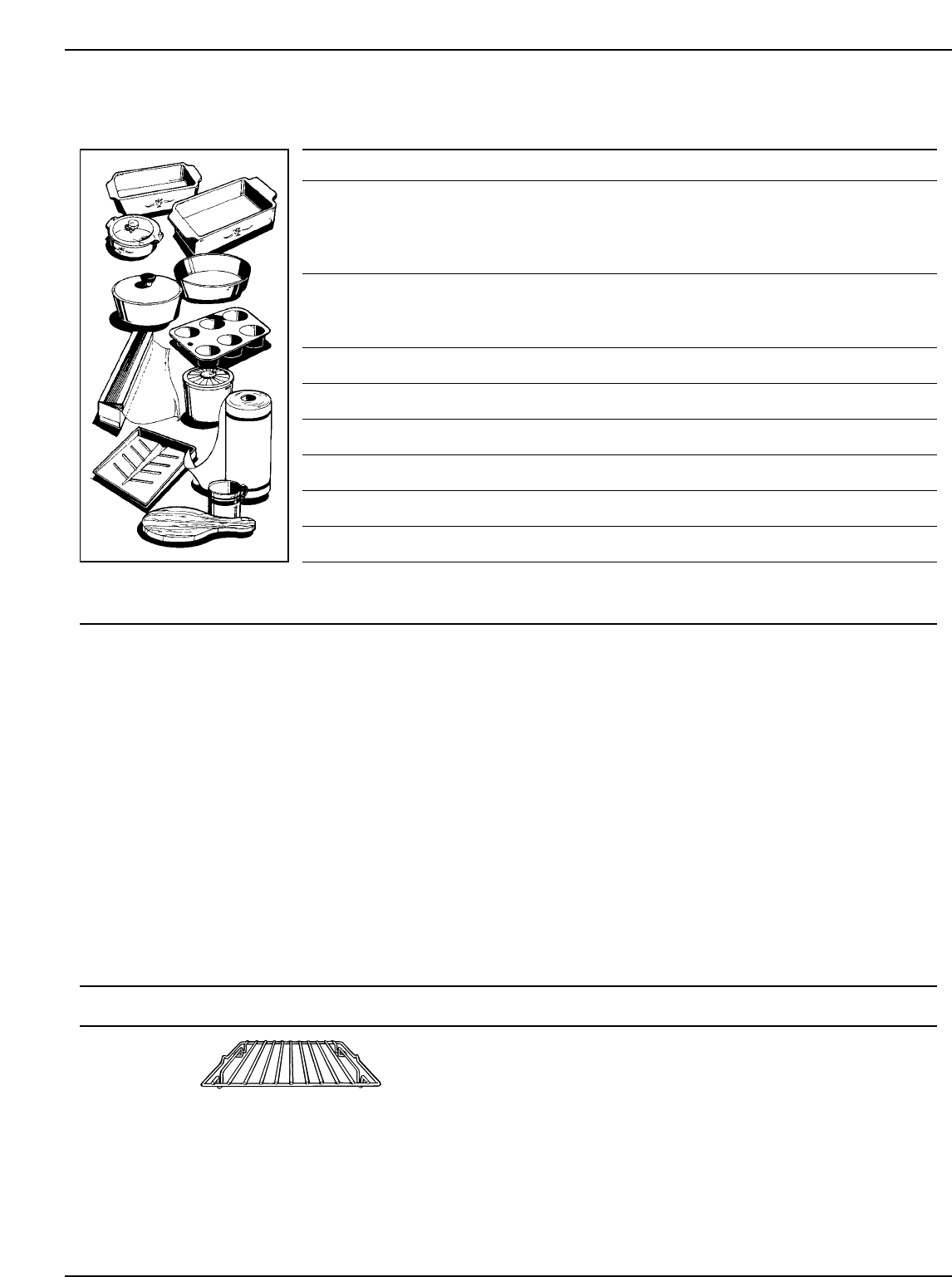
METAL SHELF
The shelf is required for good air circulation and even
browning when using Convection and Combination
cook. Allow at least one inch between the pan and
the walls of the oven for air circulation.
COOKWARE AND ACCESSORIES
Cookware Microwave Convection Combination
Heat-Resistant Glass, YES YES YES
Glass-Ceramic (Pyrex,
®
Fire King,
®
Corning
Ware,
®
etc.)
Ceramic YES YES YES
(Cookware with
no metal trim)
Metal NO YES NO
Non Heat-Resistant Glass NO NO NO
Microwave-Safe Plastics YES NO YES*
Plastic Films and Wraps YES NO NO
Paper Products YES NO NO
Straw, Wicker and Wood YES NO NO
*Use only microwave cookware that is safe to 400°F.
Cookware Tips
Microwave Convection Combination
NO YES, YES,
on the floor on the floor
of the oven. of the oven.
Convection Cooking
METAL PANS are recommended for all types of baked
products, but especially where browning or crusting
is important.
Dark or dull finish metal pans are best for breads and
pies because they absorb heat and produce crisper
crust.
Shiny aluminum pans are better for cakes, cookies
or muffins because these pans reflect heat and help
produce a light tender crust.
GLASS OR GLASS-CERAMIC casserole or baking
dishes are best suited for egg and cheese recipes due
to the cleanability of glass.
Combination Cooking
GLASS OR GLASS-CERAMIC baking containers
are recommended. Be sure not to use items with metal
trim as it may cause arcing (sparking) with oven wall
or metal accessory shelf, damaging the cookware, the
shelf or the oven.
HEAT-RESISTANT PLASTIC microwave cookware
(safe to 400°F) may be used, but it is not recommended
for foods requiring crusting or all-around browning,
because the plastic is a poor conductor of heat.
12



